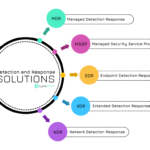Imagine a honeypot as a tempting trap, purposefully set up to lure curious “guests”—in this case, hackers. Essentially, a honeypot is a decoy system or network designed to look like an easy target for cybercriminals. The goal? To get attackers to engage with this bait system, while cybersecurity pros quietly observe and learn from their moves.
Honeypots have become essential tools in cybersecurity because they allow us to study the behaviors and tactics of attackers without putting any real data at risk. It’s like getting a sneak peek into the hackers’ world—how they operate, what vulnerabilities they’re after, and what their next moves might be. By observing these tactics, IT experts gain valuable insights to strengthen their systems against future attacks.
In this article, we’ll dive into how honeypots work, the different types, why they’re so critical in cybersecurity, and what to keep in mind when using them. So, join us on this journey into the world of digital deception, where hackers walk into traps, and we all come out a little wiser!
What is a honeypot?

Think of a honeypot as a tasty trap made specifically to lure in curious guests – or in this case, hackers. Basically, a honeypot is a fake system or network that looks like it might contain exciting or valuable information. It could be a supposedly vulnerable database or an insecure server.
The idea is that cybercriminals think, “Wow, that looks easy, I can easily gain access!” And that’s where we come in. If they go for it, we gather information about how they work, what methods they use and what they’re up to. This is super useful because it allows security researchers and IT professionals to better understand how to protect themselves against attacks.
So a honeypot gives us a look behind the scenes of the hacker world. It’s like a spy that tells us what the bad guys are up to while they think they’re completely undisturbed. In this way, honeypots help to improve security in the digital world, all while giving us a little frisson of excitement – like a suspense thriller set right under our noses!
Types of Honeypots

Now that we know what a honeypot is, let’s take a look at the various types – because they’re almost as diverse as the types of honey out there!
Low-Interaction Honeypots: These are the simplest and quickest honeypots you can imagine. They simulate just the basic functions of a system, like a server or a website. Think of them as a jar of honey that’s mostly empty – they attract bees, but don’t offer much beyond what you see at first glance. They’re super easy to set up and great for spotting initial attacks.
High-Interaction Honeypots: Now things get more exciting! These honeypots provide real systems and applications, creating a realistic environment for hackers. They can get pretty complex and allow intruders to do a lot more. It’s like having a fully stocked honey jar with all sorts of flavors. Here, security researchers can gain deeper insights into what hackers are really up to and what techniques they use.
Research Honeypots: This type of honeypot is often used by security researchers and universities to learn more about cyberattacks and hacker tactics. It’s like having a lab for honey research! The focus here is less on the security of a specific organization and more on understanding the overall threat landscape.
Production Honeypots: These honeypots are integrated into real networks to boost security within a company. They’re like a watchdog that not only barks when someone knocks on the door but also keeps an eye on the surroundings and deters potential intruders.
No matter which type of honeypot we look at, each serves its own purpose and helps make the cyber world a little safer. It’s like a big honey harvest – each pot has its special role in keeping the bees at bay!
Why are honeypots important?

So, why are honeypots so important? Well, imagine you’re a security expert, and your job is to protect your digital home from intruders. A honeypot is like a clever trick that helps you do just that! Here are a few reasons why they’re so valuable:
Early Warning: Honeypots help you detect when someone is trying to break into your system. They act like an alarm that goes off when someone gets too close to your digital garden. If you know something’s up, you can react quickly and prevent further damage.
Learning About Attackers: These little traps give you the chance to learn a lot about hacker tactics and techniques. It’s like getting a peek inside the minds of intruders! The more you know about their methods, the better you can prepare to fend them off in the future. Knowledge is power, and in the cyber world, that’s especially important!
Testing Security Measures: Honeypots are also a great way to test your security strategies. You can see how well your defenses hold up when real attackers try to get in. If you spot weaknesses, you can fix them before they become a real problem.
Distraction for Attackers: Having a honeypot can also distract attackers from your actual, critical systems. It’s like a tasty decoy that keeps them busy while you secure your real treasures. This gives you more time to focus on your genuine security measures.
Challenges and Risks

While honeypots are pretty cool and offer many benefits, there are also a few challenges and risks to keep in mind – kind of like those little stings from bees that you sometimes get!
Management and Maintenance: A honeypot is like a plant that needs regular care. Once you set it up, you have to make sure everything is running smoothly and that there are no glitches. Otherwise, it might stop working, or the data you want to collect could get lost. This can be time-consuming and requires some technical know-how.
Real Attacks: Sometimes, hackers who break into a honeypot don’t just mess around. They might try to gain access to real systems. That’s like a bee getting too close to the actual honey harvest – it can get dangerous! So, you need to keep a close eye on the honeypot to ensure it doesn’t become a gateway to bigger problems.
Relevance Issues: A honeypot can also sometimes provide misleading information. If attackers realize they’re dealing with a honeypot, they might change their tactics or simply stop attacking it altogether. That’s a bit like bees ignoring the real honey because they’re buzzing off in another direction. This can lead to the collected data becoming less valuable.
Legal Considerations: Finally, there are legal issues to consider. You have to make sure you’re following laws and regulations when setting up a honeypot. It’s important to avoid getting into legal gray areas while trying to make the cyber world safer.
While honeypots can be great tools, they come with their own set of challenges. It’s essential to be well-prepared and aware of the risks so that playing the game with hackers doesn’t turn into an unpleasant surprise!
List of Honeypots

Here are some honeypots that can be used free of charge:
- Express honeypot
- owa-honeypot
- HonnyPotter
- HIHAT
- Log4Pot
Summary
Honeypots are essential tools in cybersecurity designed to attract and trap potential attackers, providing valuable insights into their methods and intentions. They serve several key purposes:
Early Detection: Honeypots act as an early warning system, alerting security teams to unauthorized attempts to access systems, allowing for quick response and damage prevention.
Understanding Attackers: They offer a unique opportunity to study hacker tactics and techniques, enhancing knowledge and preparation for future threats.
Testing Security: Honeypots are effective for testing existing security measures, helping identify vulnerabilities before they can be exploited in real attacks.
Distraction: By drawing attention away from critical systems, honeypots can serve as decoys, allowing security teams to better protect important data and infrastructure.
Overall, honeypots not only improve threat detection and response but also enhance the overall security posture of organizations by providing insights into the ever-evolving landscape of cyber threats. They are a clever and strategic asset in the fight against cybercrime.




